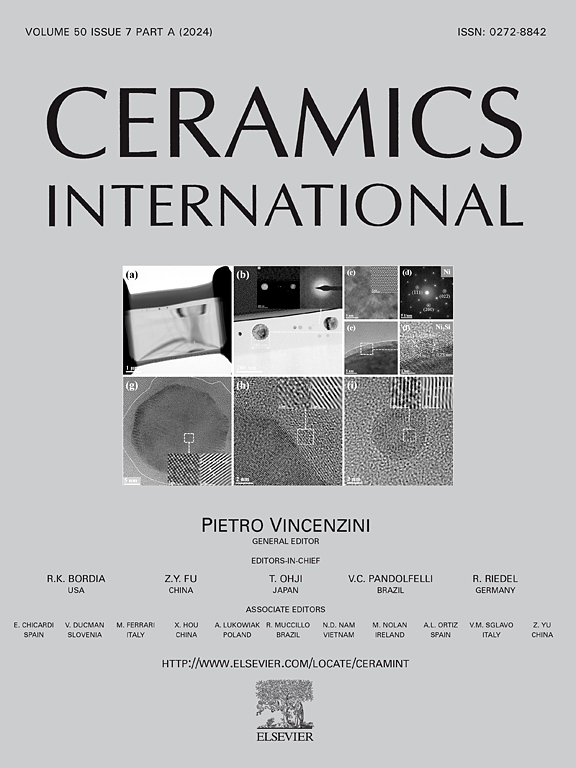Utilization of metallic foils to prevent carbon contamination in spark plasma sintered Y2O3
IF 5.1
2区 材料科学
Q1 MATERIALS SCIENCE, CERAMICS
引用次数: 0
Abstract
Y2O3 ceramic fabricated by Spark Plasma Sintering (SPS) has the potential to have fine grain sizes and rapid fabrication. Carbon contamination, however, is noted for oxide materials sintered via SPS due to the graphite tooling. In the present work, a variety of 25–50 μm thick metallic foils are utilized to prevent carbon contamination in the final specimen. The carbon contamination appeared as carboxylate absorption bands between 6 and 7 μm wavelength region. Ta foil was found to be superior to all other metals as a carbon blocker for improved transmission of the ceramic in both the visible and the infrared (IR). Inexpensive and thin foils of metals such as Ti and Zr proved suitable for IR transmission in materials where visible transmission is limited by structure or scattering from multiple phases such as 3YSZ or Y2O3-MgO composites.
求助全文
约1分钟内获得全文
求助全文
来源期刊

Ceramics International
工程技术-材料科学:硅酸盐
CiteScore
9.40
自引率
15.40%
发文量
4558
审稿时长
25 days
期刊介绍:
Ceramics International covers the science of advanced ceramic materials. The journal encourages contributions that demonstrate how an understanding of the basic chemical and physical phenomena may direct materials design and stimulate ideas for new or improved processing techniques, in order to obtain materials with desired structural features and properties.
Ceramics International covers oxide and non-oxide ceramics, functional glasses, glass ceramics, amorphous inorganic non-metallic materials (and their combinations with metal and organic materials), in the form of particulates, dense or porous bodies, thin/thick films and laminated, graded and composite structures. Process related topics such as ceramic-ceramic joints or joining ceramics with dissimilar materials, as well as surface finishing and conditioning are also covered. Besides traditional processing techniques, manufacturing routes of interest include innovative procedures benefiting from externally applied stresses, electromagnetic fields and energetic beams, as well as top-down and self-assembly nanotechnology approaches. In addition, the journal welcomes submissions on bio-inspired and bio-enabled materials designs, experimentally validated multi scale modelling and simulation for materials design, and the use of the most advanced chemical and physical characterization techniques of structure, properties and behaviour.
Technologically relevant low-dimensional systems are a particular focus of Ceramics International. These include 0, 1 and 2-D nanomaterials (also covering CNTs, graphene and related materials, and diamond-like carbons), their nanocomposites, as well as nano-hybrids and hierarchical multifunctional nanostructures that might integrate molecular, biological and electronic components.
 求助内容:
求助内容: 应助结果提醒方式:
应助结果提醒方式:


